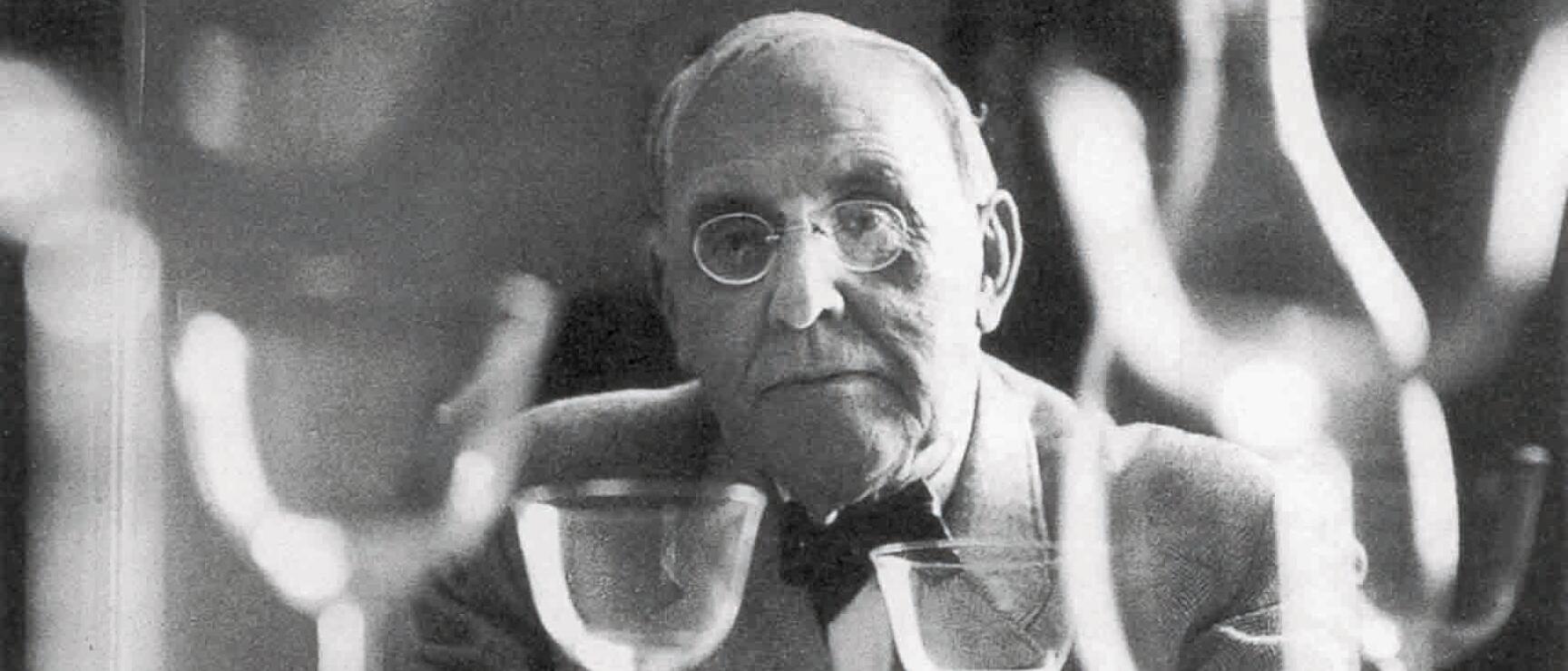
Josef Hoffmann
Architect and designer of Art Nouveau and co-founder of the Wiener Werkstätte
Josef Hoffmann was a visionary architect and designer who played a key role in shaping the concept of the total work of art, the "Gesamtkunstwerk". His goal was to unify various art forms—architecture, design, music, and craftsmanship—into a harmonious and cohesive experience, where every detail is carefully crafted in the context of the whole.
Hoffmann aimed to integrate art into all aspects of life. As a co-founder of the Wiener Werkstätte, he realised this vision by designing both aesthetic and functional everyday objects.
His work spans architecture, garden design, fashion, tableware, and cutlery, showcasing his commitment to perfection in every detail. Hoffmann’s dedication to craftsmanship and his role as an educator influenced generations and established him as a pioneer of modern design in Austria.
Josef Hoffmanns Gesamtkunstwerke
Josef Hoffmann
Visionary of the Gesamtkunstwerk
Josef Hoffmann was born in 1870 in Příbor, Moravia (today's Czech Republic). It was the era of the Industrial Revolution, marked by both its positive and negative social and societal impacts, such as housing shortages in cities, child labour, mass poverty, and environmental pollution.
When Josef Hoffmann began his studies in architecture at the Academy of Fine Arts in Vienna in 1892, he was deeply influenced by the English and Scottish Arts & Crafts movement. This movement sought to infuse art into every aspect of life.
Beautiful, functional everyday objects were designed to make life more enjoyable and aesthetically pleasing for a broader segment of society. Hoffmann and his circle of friends firmly believed that art could even "heal" the human soul.
Designs without boundaries
The aesthete who attracted spaces like clothes
Josef Hoffmann shared his views with the distinguished Viennese architect Otto Wagner, under whom Hoffmann studied at the Academy.
Both saw the role of the architect as not limited to architecture alone. Instead, they believed that an architect should also be a designer, shaping everything, even the smallest objects, in a harmonious way. Hoffmann remained faithful to this belief throughout his life.
No task was too big for him, nor was any task too small. Among Hoffmann’s architectural masterpieces are the Sanatorium Westend in Purkersdorf near Vienna and the Palais Stoclet in Brussels (a UNESCO World Heritage site), both of which feature interiors and gardens meticulously designed by him.
He even went so far as to consider the hostess’s wardrobe. In fact, Hoffmann felt that the lady's attire at the opening of the Brussels private palace didn’t match the overall ensemble, prompting him to focus more on fashion design in the future. Everything perfectly styled—truly a total work of art.
Design, craftsmanship, innovation
Die Wiener Werkstätte
To produce and market artistic everyday objects, a structured organisation was needed. In 1897, a group of avant-garde artists—Gustav Klimt, Koloman Moser, Joseph Maria Olbrich, Carl Moll, Josef Hoffmann, and others—came together to form the Wiener Secession, a counter-movement to the established artists of the time.
Just six years later, Josef Hoffmann and his friend Koloman Moser took the next step. With financial backing from industrialist Fritz Waerndorfer, they founded the Wiener Werkstätte. The logo of the Wiener Werkstätte, "WW," stood for quality, simple forms, and elegance in daily life.
One could say that Josef Hoffmann was a precursor to modern corporate design, as he was deeply committed to the concept of the total work of art. He himself created countless designs for functional and decorative objects, many of which are still produced today by companies such as Augarten Porcelain Manufacture, J & L Lobmeyr, and Backhausen.
For nearly 30 years—from 1903 to 1932—this cooperative of artists and craftsmen was a unique enterprise in Europe.
In Josef Hoffmann's footsteps in Vienna
A day tour with Josef Hoffmann in Vienna
Sustainability in traditions
Craftsmanship and tradition
The creative group behind the Wiener Werkstätte produced beautifully crafted products by combining traditional craftsmanship techniques with modern designs. They sought to move away from industrial mass production—an idea that is experiencing a revival today, alongside the growing desire for sustainability and handcrafted goods.
In Austria, the preservation of customs and traditions is closely tied to sustainability. Practices such as Alpine cattle drives, cultural festivals, and regional craftsmanship reflect a deep respect for nature and resources.
Intangible cultural heritage also honours traditional rituals, customs, and crafts passed down from generation to generation. For visitors, experiencing these traditions offers a glimpse into Austrian culture and strengthens local identity.